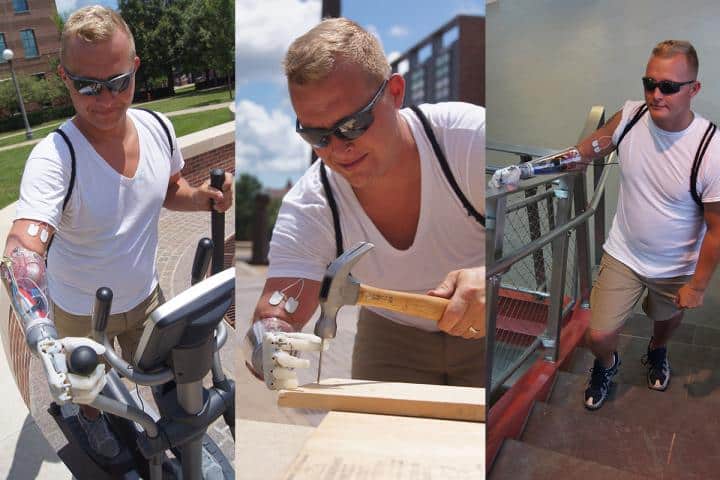
A patient performs various everyday tasks with a sensory control module integrated with his prosthetic arm (Credit: Aadeel Akhtar, University of Illinois)
Modern prosthetic arms are often equipped with electrodes that provide the wearer with a degree of ‘touch’, with sensors in the fingertips sending current to electrodes on the limbs. Light pressure will produce a light sensation, and a stronger current indicates a heavier touch. But the electrodes can sometimes become detached, or a build-up of sweat can affect their function. When this happens, amputees can be subjected to uncomfortable electric shocks as the current builds up in a single spot.
To counteract this, a team at the University of Illinois devised a controller that monitors what the patient is experiencing, automatically adjusting the current level to deliver steady feedback. Even when sweating or the electrodes are 75 per cent peeled off, the user feels the appropriate amount of current.
"We're giving sensation back to someone who's lost their hand,” said lead author Aadeel Akhtar, an MD/PhD student at the University of Illinois. “The idea is that we no longer want the prosthetic hand to feel like a tool, we want it to feel like an extension of the body."
Published in Science Robotics, the study details how the controller was tested on two volunteer patients. A test was performed where the electrodes were progressively peeled back, and it was found that the control module reduced the electrical current so that the users reported steady feedback without shocks. The researchers also had the patients perform a series of everyday tasks that could cause loss of sensation due to sweat: climbing stairs, hammering a nail into a board and running on an elliptical machine.
"What we found is that when we didn't use our controller, the users couldn't feel the sensation anymore by the end of the activity,” said Akhtar. “However, when we had the control algorithm on, after the activity they said they could still feel the sensation just fine."
The team is working on miniaturising the module that provides the electrical feedback, so that it fits inside a prosthetic arm rather than attaching to the outside. There are also plans to do more extensive patient testing with a larger group of participants.





Nanogenerator consumes CO2 to generate electricity
Whoopee, they've solved how to keep a light on but not a lot else.